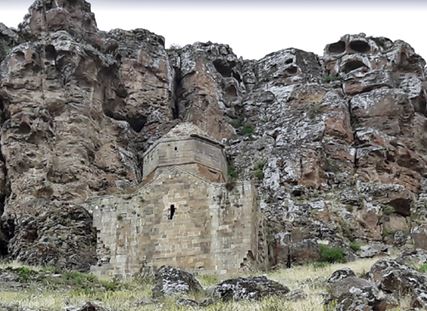
Capture of the Perkrin fortress |
year: 1034 |
| Recapture of a frontier fortress by the Byzantines | ★ ★ ★ ★ ★ |
|
enemy: Turkomans
|
location: Near the northeastern end of lake Van in Asia Minor, near modern Muradiye (Arm.Berkri)
|
accuracy:
●●●●●
|
|
battle type: City Capture |
war: Later Byzantine-Muslim Wars |
modern country:
Turkey |
| ▼ The Byzantines(emperor: Romanos III Argyros) | ▼ The Enemies | |
| Commander: | Patrician Nikitas Pigonotis | Emir Alim |
| Forces: | ||
| Losses: |
| Background story: |
| In the period of the reign of Zoe and her various husbands (1028–1055), Byzantium was ruled by some weak emperors and corrupted courtesans. The army, however, remained strong after a series of military successful kings (Focas, Tzimiskes, Basil) who had created a tradition. That is why at the eastern front, despite the failure at Azaz, there had been substantial territorial gains, especially due to local generals such as Georgios Maniakes. Another factor of this period was the absence of a large and dominant Muslim force on the southeastern/eastern borders. There were only various small and fragmented kingdoms (Armenian, Georgian, Turkmen, Arabic, Kurdish) that fought constantly against each other. Some of them had no choice but to request the protection of the strong and rich Byzantium. Under these circumstances, the local “Saracen” Emir Alim (who was actually a Turkoman) handed over the fortress of Perkrin, northeast of Lake Van, to Byzantium (Skylitzes locates it wrongly near Babylon, simply because for him it was “too far”). The emir also sent his son to Constantinople to seal the agreement. He expected that his voluntary submission to Byzantium would bring him titles and monetary rewards, according to the established practice of the Byzantine diplomacy. Something similar had happened with the annexation of the neighboring Armenian state of Waspurakan (Vaasprakania) a few years ago, during the time of the Basil II. But Emperor Romanos III was very ill (probably because Zoe was slowly poisoning him) and could not accept the emir's son, who left empty-handed and deeply offended. Due to the insult, but also probably because he diagnosed a weakness in the Byzantine administration, the emir's son persuaded his father to forget the agreement. |
The Battle: |
 Armenia church near the fortress So Alim sought help from his fellow Turkmens in neighboring states and managed to capture the fortress, killing all the Byzantine soldiers of the guard force, at least 6,000 (according to Georgian sources, 24,000). This development was very serious and a strong Byzantine force was sent to Perkri, consisting mainly of the Varangian guard, led by the patrician Nikitas Pigonitis. Pigonitis recaptured the fortress after a bloody siege and killed Emir Alim and his son. |
Noteworthy: |
| Since Alim was a Turkoman, the events at Perkri Fortress were the first clash between Byzantine forces and Turks. Until then, there had been no conflict with any of the nomadic Turkish tribes that were slowly expanding from the east. In other words, in Perkri in 1034, the first battle in history between Greeks and Turks took place. |
Aftermath: |
| Perkri remained a Byzantine possession for a while. It became a strategis, part of the Duchy of Vaasprakania. It remained in this state for several decades until territorial losses began after the Seljuk attacks. It seems that the problems with the Turkomans had started from that time and, in the face of the emerging new danger, the capable George Maniakis, who became Catepan of Vaasprakania for a while, was transferred there in 1036/37. |
|
|
